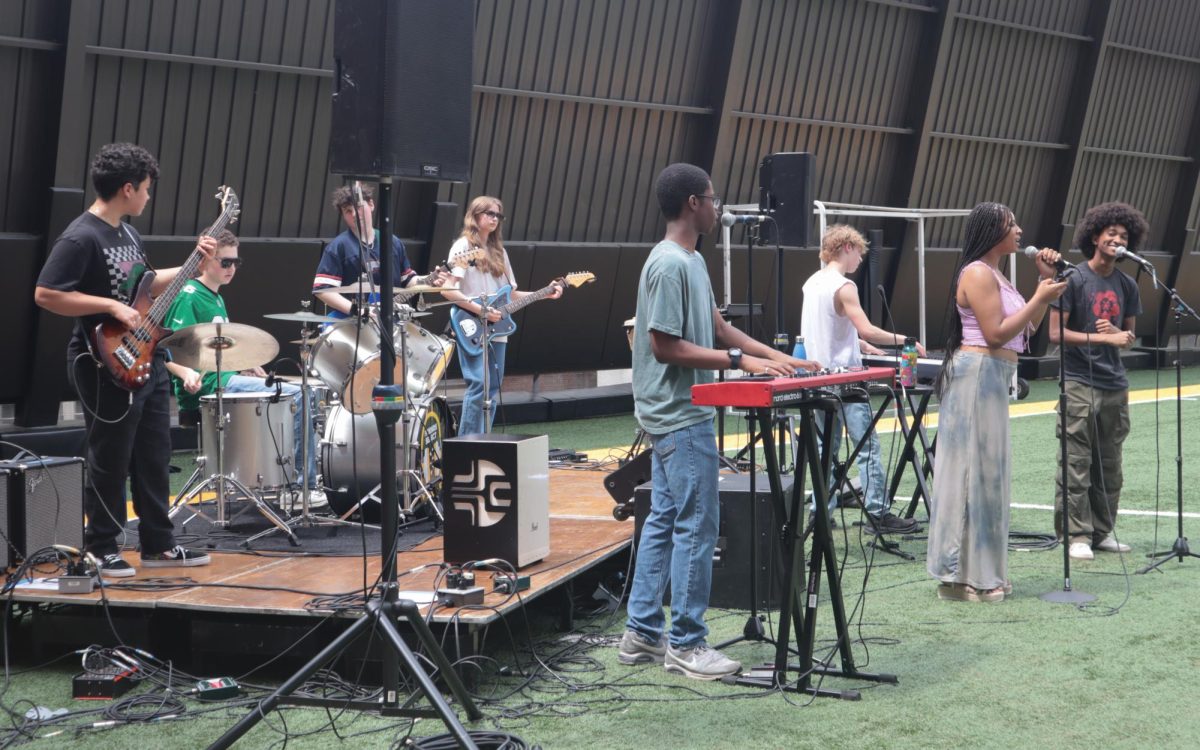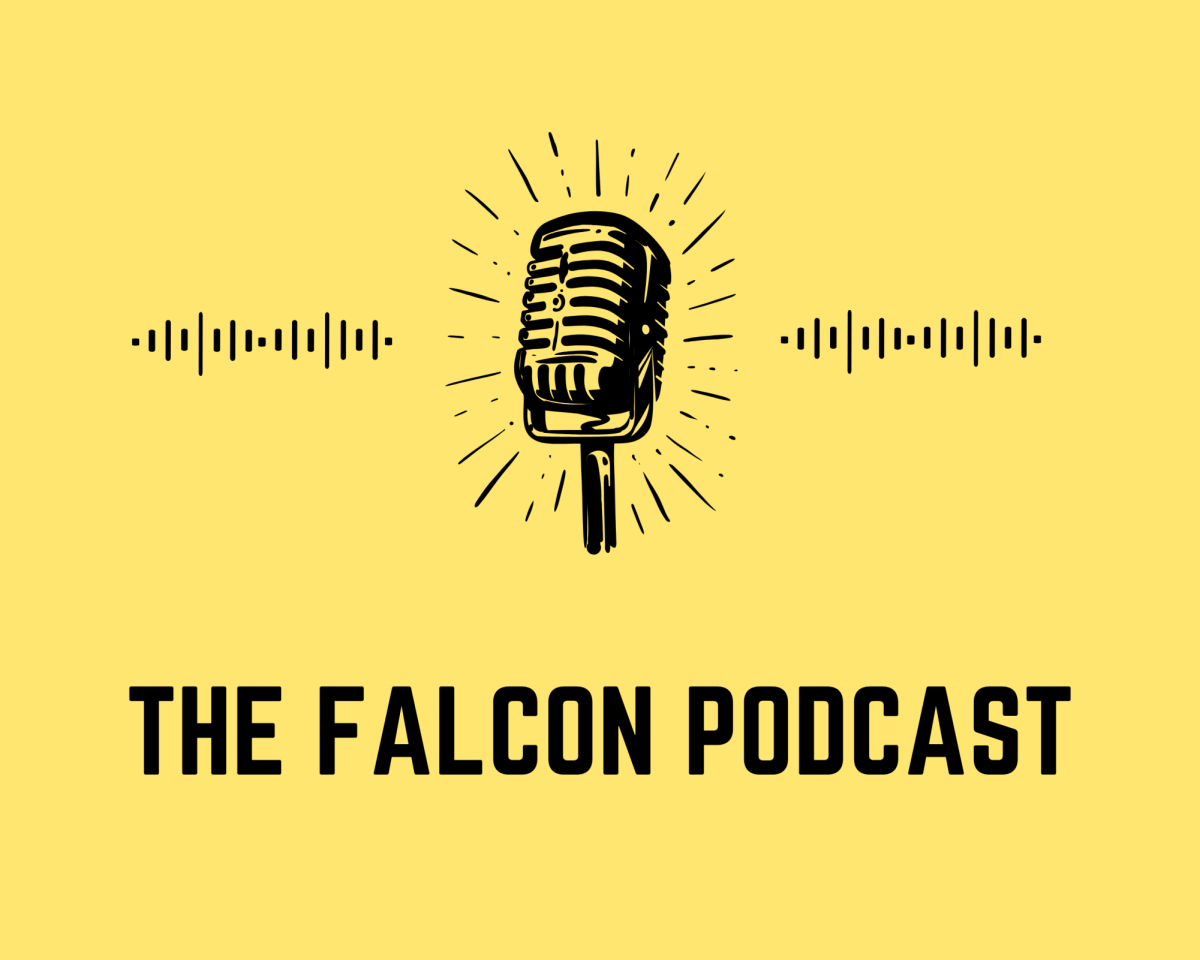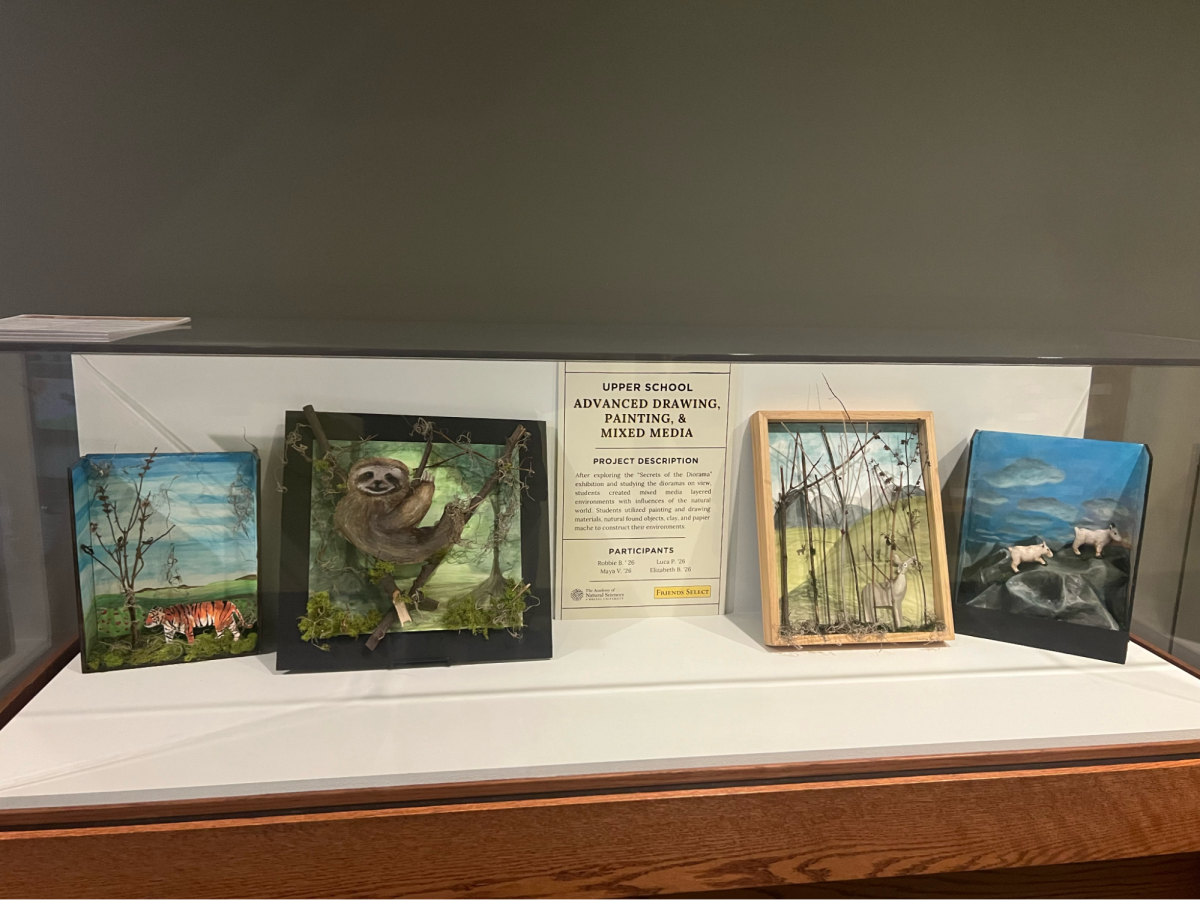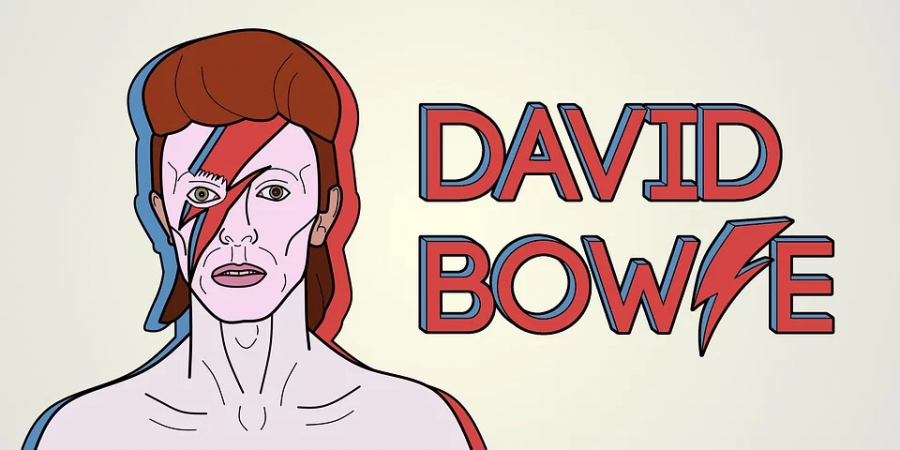Opinion: Rock N Roll Suicide- On the Death of Ziggy Stardust
Our last major pre-quarantine Friends Select gathering was our annual World Cafe Live performance. To cap off the night, the orchestra and choir teamed up to perform a 15 minute David Bowie medley. Each of the five songs that made up Heather Fortune’s arrangement (“Starman,” “Changes,” “Space Oddity,” “Life On Mars?” and “Lady Stardust”) were pulled from the first five years of Bowie’s career. During Bowie’s formative years, he created some of the character’s he is most known for, the most noteworthy being Ziggy Stardust.
On July 3rd, 1973, at The Hammersmith Odeon in London, Ziggy Stardust took the stage for the last time. David Bowie played twenty songs spanning his entire career, as well as five covers, drawing from disparate influences like Chuck Berry and The Velvet Underground. After an hour and thirty eight minutes and nineteen songs, Ziggy Stardust (Bowie’s alter-ego) stopped for a moment to thank his fans and make an announcement: “Of all the shows on this tour, this is the one that will remain with us the longest because not only is it the last show of the tour… but it’s the last show we’ll ever do.”
“Rock N Roll Suicide” is the last song on The Rise and Fall of Ziggy Stardust and the Spiders From Mars. It’s strange that David Bowie wrote “Rock N Roll Suicide” at the time of Ziggy’s inception, considering it seems almost as if it was created for the moment of Ziggy’s death at The Odeon. It’s also Bowie’s second (after “Changes”) notable wrestle with one of his greatest subjects: time. The last raucous notes of the 70s classic rock paradigm “Suffragette City” have just been hit when Ziggy Stardust… takes a final 180. “Rock N Roll Suicide” begins with just acoustic guitar. It pauses and Bowie sings, “Time takes a cigarette, puts it in your mouth.” As you drag on the cigarette, time passes by, and you grow older and, one way or another, you die. To the cynical, a 26 year old’s take on death and aging might seem absurd. But keep in mind that it’s 1972. Ziggy Stardust is slated to be Bowie’s fifth record in as many years. Although he got his name out on 1969’s “Space Oddity,” and saw some success with a few tracks off 1971’s Hunky Dory, Bowie still hadn’t made a cohesive front-to-back album. Perhaps even more importantly, he needed a record that would sell copies; otherwise, he was out. In short, Ziggy Stardust was life or death.
Forming Ziggy Stardust, Bowie was like Springsteen writing “Born to Run,” having to pull out every creative stop possible to save his career and himself. Instead of trying to write the greatest rock song of all time, though, Bowie needed to create the greatest rockstar of all time. All great pieces of art have a tension pulling at their fabric, and Bowie’s fight for his future is what gives Ziggy Stardust life. However, this doesn’t create an enduring figure. It would be easy to keep the character that saves your career around forever. Ziggy Stardust was Bowie’s first major commercial success; it’s what catapulted him to international fame. Nowadays, David Bowie is known for the vast cast of characters he personified throughout his career. It’s easy to forget that Ziggy Stardust was not only the first fully fleshed out Bowie persona, but the first of his characters to bring him stardom and relative security. A lesser man might have kept pumping out Ziggy Stardust records until well past the drying of that well, therefore diluting his creation. Part of what makes Ziggy so compelling after forty-plus years, when many of the lyrics that defined him can seem dated and laughable, is that he smoked time’s lit cigarette like the rest of us.
Death pops up throughout the course of Ziggy Stardust…, and it’s no spoiler that Bowie killed off Ziggy. However, “Rock N Roll Suicide” is not the numb, nihilistic suicide song of, say, a Richard Hell figure, or even the kinds of self-destruction that Bowie’s close punk friends Iggy Pop and Lou Reed embodied: Ziggy reaches his literal demise on his eponymous track. On “Rock N Roll Suicide”, he faces his death, and for the first two and a half verses, he suffers. Time is running out and worse yet, so are the things he has to offer to the world. Maybe Ziggy has lived too long — looking back on Bowie’s life, it’s clear that he feared stagnation even more than he feared change.
“Rock N Roll Suicide” was the last song Ziggy Stardust played at The Odeon on July 3rd, 1973. A single red spotlight hits the skeletal David Bowie silhouetted against the kick drum. As the words come in, the camera zooms in to focus on Bowie’s face, framed by Ziggy Stardust’s signature red mullet. At the end of the second verse, the band pauses and Bowie points at an audience member hidden in the darkness as he sings “Oh, you’re a rock n roll suicide.” The third verse is where things begin to shift. Our song’s protagonist is stumbling home. He almost lets a car hit him as he crosses a road, but it brakes and the sun begins to rise. Bowie paces the stage. As the song climaxes, though, the band suddenly stops.
The next three minutes define Ziggy Stardust: Bowie turns his head for a split second to take a breath, and time stands still again. Bowie sings: “Oh no, love, you’re not alone,” and on the word alone, the band re-enters with new intensity. The camera angle shifts for the first time since Bowie started singing. For a few seconds all we see is that red mullet against the pitch black of the audience, until Bowie sings: “I’ve had my share, I’ll help you with the pain. You’re not alone!” All of a sudden, the view pans wide. The quasi-extraterrestrial Bowie steps in front of his monitors to the very edge of the stage. “You’re wonderful. So gimme your hands!” Dozens of hands are illuminated at his feet. Breaking both the decorum of the time-period’s distant rockstars and the illusion of himself as a spaceman, Bowie leans down and starts taking people’s hands.
The drummer plays one last fill. Bowie raises his arms, and as he brings them down into a bow, the song ends. At the very end of the video, so fast you’d hardly notice, a girl jumps on stage and hugs Bowie. As quickly as it happens (Bowie hardly seems to process it himself), she is whisked off by security. Bowie only looks dazed for a moment before returning to the mic as Ziggy Stardust to offer a final word of gratitude: “Thank you very much. Bye bye, we love you.”
Ziggy Stardust’s death is what has allowed him to endure as a character. It humanized an otherwise alien figure. Despite only having been the persona behind two Bowie records, he has continued to inspire artists born decades after his time (including our very own Friends Select Orchestra, who performed a 15 minute Bowie medley at World Cafe Live). Ziggy Stardust… easily could have been just a record about a guitar-wielding space god. But by also showing us the moments in which the starman wrestles with the very human dilemmas of time, death, and aging, Bowie creates a relatable and inspiring figure. By showing us the human in Ziggy, Bowie also shows us the Ziggy in all of us.
Note: I couldn’t write this without saying that there are multiple accounts of David Bowie sleeping with underage girls in his mid twenties. I don’t want to tell anyone how to filter who they listen to, but I can say that I’ve talked to a lot of different artists about this sort of thing. These topics are complicated, and I’m neither going to tell anyone to stop listening to David Bowie nor excuse his actions. I do think it is important to always be pushing ourselves to find less problematic, marginalized artists that may have gone unnoticed in their time, so I encourage all Bowie fans to look into artists who are part of marginalized groups who influenced your favorite Bowie phase.























